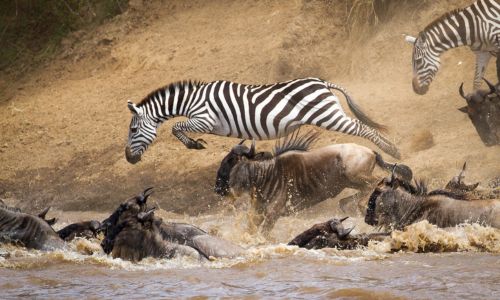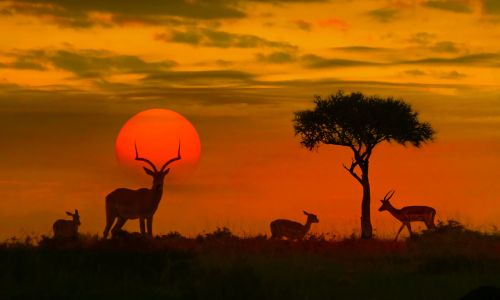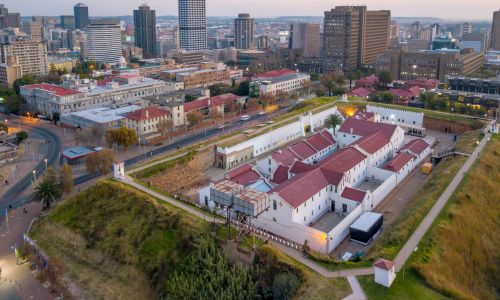Witnessing the Great Migration is one of the most profound wildlife experiences on the planet. Each year, millions of wildebeests, zebras, and gazelles thunder across the vast plains of East Africa, driven by ancient instincts in a relentless search for fresh grazing and water. This spectacular event is a raw, unfiltered display of nature’s power and a life-altering sight for travelers lucky enough to experience it.
The sheer scale of this journey is difficult to comprehend. It’s a continuous, cyclical movement that unfolds across the Serengeti in Tanzania and Kenya’s Maasai Mara. To stand before this moving river of life, to hear the chorus of hooves and grunts, and to feel the ground tremble beneath you is an experience that stays with you forever. But before you can witness the Great Migration in all its glory, consider preparing these eight important things.
1. Select the Right Time and Location
The Great Migration is a year-round phenomenon, but the herds are constantly on the move. Your first step is to align your travel dates with the migration’s anticipated location. While patterns shift slightly due to rainfall, the general timeline is relatively predictable.
- January to March: The herds gather on the southern Serengeti plains for calving season. This is a time of new life, but also a period of high drama as predators like lions and cheetahs take advantage of the vulnerable newborns.
- April and May: The long rains begin, and the herds start their journey northwest, moving from the southern plains toward the Serengeti’s Western Corridor.
- June and July: The animals congregate in the Western Serengeti, preparing for the perilous Grumeti River crossing. This is one of the migration’s most dramatic spectacles.
- August to October: The herds push north into Kenya’s Maasai Mara National Reserve, where they face the legendary Mara River crossing. This is arguably the most famous and sought-after part of the migration to witness, and peak season for many Kenya tours.
- November and December: The short rains draw the herds back south, returning to the Serengeti’s southern plains to begin the cycle anew.
2. Book Accommodations and Guides Early
Peak migration season, particularly from July to October in the Maasai Mara, is incredibly popular. Accommodations—whether luxury lodges, tented camps, or mobile camps that follow the herds—fill up months, sometimes even a year or more, in advance.
The best safari guides are also in high demand. Start planning and booking at least 9 to 12 months before your intended travel date to avoid disappointment. An experienced local guide is your most valuable asset; their expertise in tracking wildlife and navigating the terrain will define your safari experience.
3. Pack Appropriate Safari Clothing
Your wardrobe should be practical, comfortable, and suited for a range of conditions. Layering is important, as early mornings and evenings are cool, while midday temperatures can get quite hot.
- Colors: Consider neutral, earthy tones like khaki, beige, olive, and brown. These colors help you blend in with the landscape and are less likely to startle the animals. Avoid bright colors, which attract unwanted attention from insects or distract wildlife. Black and dark blue can also attract tsetse flies, so it’s best to leave those at home.
- Materials: Choose lightweight, breathable fabrics, such as cotton and moisture-wicking materials. Long-sleeved shirts and long pants offer protection from the sun and insects.
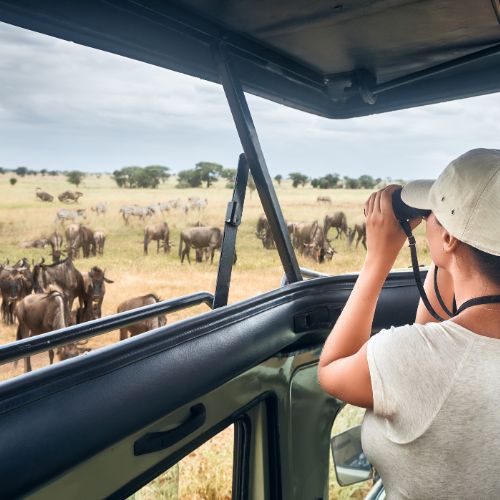
4. Invest in Good Quality Binoculars
While your safari vehicle will get you remarkably close to the action, a quality pair of binoculars is nonnegotiable. They bring the wildlife right to you, allowing you to see the intricate details of a lion’s mane, the twitch of a zebra’s ear, or the determination in a wildebeest’s eyes as it contemplates a river crossing.
Look for binoculars with a magnification of 8×42 or 10×42. These offer a great balance of magnification and field of view, making it easier to spot and follow animals in motion without being too heavy to carry.
5. Consult Your Doctor for Health Preparations
Travel to East Africa requires some health precautions. Schedule a visit with your doctor or a travel clinic at least four to six weeks before your departure. They will advise you on necessary vaccinations, such as Yellow Fever, and may recommend antimalarial medication depending on the specific areas you’ll be visiting.
Moreover, pack a personal first aid kit with items like insect repellent containing DEET, antiseptic wipes, dressings, painkillers, and personal medications you require.
6. Understand Visa and Passport Requirements
Make sure your passport is valid for at least six months beyond your planned departure date from Kenya or Tanzania. It should also have at least two blank pages for entry and exit stamps. Both Kenya and Tanzania require visas for most foreign nationals.
Many countries now use an e-visa system, which allows you to apply online in advance. Check the official immigration websites for the latest requirements and apply well ahead of your travel date to avoid last-minute stress.
7. Bring the Right Footwear
You’ll spend most of your time in a safari vehicle, but you will do some walking around your camp or lodge. Comfortable, closed-toe shoes are necessary, not optional. A sturdy pair of walking shoes or light hiking boots is ideal. They provide support on uneven ground and protect your feet from insects and thorns.
You want to avoid packing heavy, cumbersome hiking boots unless your itinerary includes specific walking safaris. For downtime at the lodge, a pair of sandals or flip-flops are a welcome comfort.
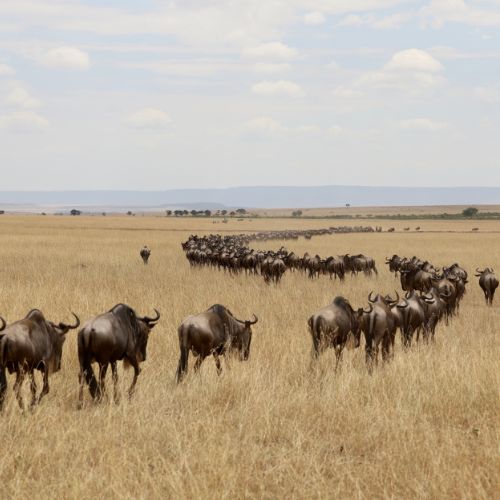
8. Cultivate a Mindset of Patience and Respect
The Great Migration is a natural event, not a staged performance. While guides are experts at finding wildlife, there are no guarantees. River crossings, predator hunts, and other dramatic moments happen on nature’s schedule, not ours.
The most rewarding safari experiences come to those who are patient. Take time to soak in the environment—the sounds, the smells, and the immense sense of space. Respect wildlife by keeping your voice low and staying inside the vehicle unless your guide says it’s safe. Remember, you are a guest in their home.
Your Migration Journey Awaits
Preparing to witness the Great Migration is about setting yourself up for an experience that will connect you to the raw, untamed heart of the natural world. With thoughtful planning, you ensure your adventure is comfortable, safe, and deeply transformative. This journey is a privilege, offering a rare glimpse into one of the last great animal migrations on Earth. Embrace the preparation, and get ready for the adventure of a lifetime!


